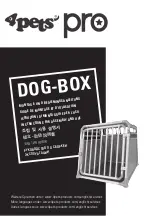
References
1. Kang, P.B., Morrison, L., Iannaccone, S.T., et al., Evidence-based guideline summary
Evaluation, diagnosis and management of congenital muscular dystrophy, 2015.
2. Bach, J.R., Ishikawa, Y., and Kim, H., Prevention of pulmonary morbidity for patients with
Duchenne muscular dystrophy, 1997 Chest, 112(4), 1024-1028.
What do I do if the mask is leaking?
• The mask is designed with holes that allow a small amount of exhaled air to escape.
This is important, and these holes should not be blocked. If it appears to be leaking
more than normal or if the machine is alarming that there is a leak, adjusting the
mask may help.
• If the leak is detected before the child goes to sleep, check the tightness of the
headgear to make sure that it is fitted but not tight. The cushion can be “reseated”
by gently pulling it away from the face and setting it back on to reset the folds
of the cushion.
• If the leak is detected when the child is asleep, use the Leak Correction Dial to nudge
the cushion closer to the child’s face.
• Use the instructions packaged with the mask for proper fitting.
• Oils or moisturizers could impact the cushion’s ability to seal properly. The cushion
should be washed daily to remove skin oils. The child’s face should be washed,
and he or she should not apply moisturizer before bed.
Is the mask too loose or too tight?
• Ensure that the straps are not too loose or too tight. If they
are too loose, the mask will not stay positioned on the face
and the child will not get adequate therapy.
• If the straps are too tight, they could cause redness
and irritation to the skin beneath the mask and the
straps. If the child is in the hospital, respiratory
therapists or nurses may frequently rotate different
masks on the child’s face and check the skin beneath
to reduce irritation.
• The straps do not have to be repositioned tightly to
hold the mask in place.
Summary of Contents for Wisp
Page 1: ...Pediatric nasal mask Wisp Caregiver guide ...
Page 5: ......






























